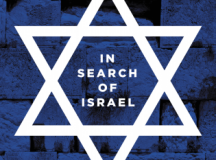Israel represents a collection of seeming contradictions. Though Theodor Herzl’s vision was a thoroughly secular one and the state was founded by secular socialist leaders, it is profoundly influenced by Judaism and religious thought, with the ultra-Orthodox representing the fastest growing demographic grouping. Traditionally, Israel has defined itself as a Jewish and democratic state, although it is open to question whether these two values can comfortably be reconciled and equally define one polity. Israel is widely acknowledged as the strongest military power in the Middle East, yet it is highly insecure in the face of asymmetrical regional security threats. Public opinion surveys have historically shown support for a two-state solution to the Israeli-Palestinian conflict, but the outcome has proved impossible to realise. How do we explain all of this? As Rob Pinfold suggests in his introduction, the complexity of contemporary Israeli politics necessitates a book to shed light on the main issues that Israel faces and the divisions that bedevil it.
This volume rises to that difficult challenge. It contains excellent contributions from leading scholars in their respective fields, such as Itzhak Galnoor, Galia Golan, David Newman, and Colin Shindler, to name but a few. Their chapters are more than mere overviews of their subject areas; they are reflections of many years of research. Consequently, though the volume may primarily be considered a primer for those new to the study of Israel, experienced Israel Studies scholars are likely to find something new in these pages. The wide array of topics covered makes this a comprehensive volume, but one that is nonetheless coherently organised into three sections: (1) The Israeli political system; (2) Issues in Israeli society and (3) Security, geopolitical and foreign policy challenges.
If there is a fault in the volume, it is that certain key contemporary issues could be afforded greater attention. Itzhak Galnoor’s chapter on Israeli democracy, for example, touches upon the role of the Israeli Supreme Court and how its political independence and ability to hold the Knesset accountable is being challenged, but does not explain in detail why this has become such a prominent issue. Further contextualisation and reflection on its relation to the political causes of the political right, including the illegal settlements in the West Bank or preference for a Jewish rather than a democratic state, would have been welcome.
Relatedly, the controversial Nation-State Law receives little attention, both in Galnoor’s chapter and Rebecca B. Kook’s on multiculturalism and identity politics. Although I know from experience that it is hard to keep up with contemporary developments when editing or contributing to an edited collection, this issue has been a source of controversy for many years, and the contours of the debate have long been clear. Deeper engagement with it would help elucidate the importance of this legal development. The implications of these two issues for Israeli democracy, identity and politics are so monumental that they really deserve individual chapters. However, this does not alter the fact that Galnoor’s and Kook’s chapters are both excellent in their analysis of their respective subjects.
One notable area for improvement is the gender balance of the contributors: of the seventeen, only four are women. I am not saying this to impugn the editors, their intentions, or their efforts; we in academia and Israel Studies quite simply need to be more proactive about the issue of gender equality within our industry, myself included. Much like the argument made by Reut Itzkovitch-Malka in her fascinating chapter on gender issues in Israel, while progress is being made, there is still a long way to go to achieve gender parity. Moreover, while Ofer Zalzberg references the divide between liberal and religious Israelis on LGBT issues, this could also have been afforded greater prominence in the volume. As any visitor to Tel Aviv and Jerusalem can attest to, the divide is manifest and the issue has been one of many sources of violence witnessed in Jerusalem.
As a scholar of the Israeli-Palestinian conflict and the failed peace process, I was particularly interested to see how this issue was treated. Given the continued prominence of the question, Chuck Freilich’s chapter on security could have done more to analyse the ongoing threat emanating from Gaza and how Israel should best approach it. His assessment of the broader peace process focuses on the Palestinians as rejectionists who spurn generous offers, and questions whether they aspire to a two-state solution. Although the split between Hamas and Fatah is rightly identified as a huge obstacle to peace, greater distinction between the two is required. While Freilich reflects a commonly held Israeli view, Galia Golan’s more nuanced assessment in her chapter provides a welcome counter-argument. She concludes that the ‘primary challenges for peace may now lie within Israel itself’, since, with the backing of the US, it no longer supports the two-state paradigm.
Based on recent evidence, a few of the contradictions previously identified appear to be gradually being resolved. A one-state solution is a de-facto reality and does seem the most likely outcome. The traditional self-identification of Israel as a Jewish and democratic state has been overridden by the 2018 Nation-State Law, which signals the end of this duality in favour of a Jewish state. Demographic trends suggest that the religious cleavage is likely to grow even larger. All of these developments have tremendous implications for Israel, its international standing and the Palestinians who remain under occupation. It is safe to say that we will need an updated volume from Peters and Pinfold in the coming years to help make sense of Israel as it looks then.




































